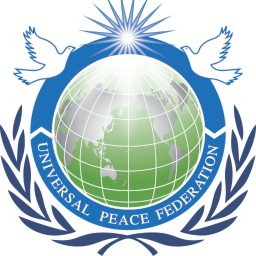Universal Peace Federation
September 11, 2001, will forever go down in human history for its tragic events.
The United Nations has made an important contribution to the cause of peace. Nevertheless, both within and beyond its framework, there is a prevailing sense that, approaching its 70th anniversary, the UN is facing serious challenges in achieving the goal for which it was established. Its nearly 200 member states often serve mainly representative functions, and at times even act to lobby for their own national interests. There is an impression that they lack the capacity to resolve conflicts and achieve peace.
The Universal Peace Federation was created as a model organization similar to the UN, to elevate peacebuilding activities to the global level. Its inauguration took place on September 12, 2005, in New York during the International Leadership Summit titled “A Time of Challenge and Change: Global Governance and the Role of Civil Society — From the Peace Council to Peace Among Nations.”
The Universal Peace Federation is intended to renew and supplement the modern-day UN, aiming to help establish a world of ideal peace, which is the eternal ideal of God’s creation.
The founding vision of Rev. Sun Myung Moon and Dr. Hak Ja Han Moon is to create a global movement with God at its center, working for lasting peace and sustainable human development.
The Federation’s name in Chinese characters is written as 天宙和平聯合, a direct translation of the Korean 천주평화연합 (Cheonju Pyeonghwa Yeonhap).
The first character ‘天’ means “heavenly world,” and also “spiritual world.” The second character ‘宙’ means “earthly world,” that is, the “physical world,” including the entire micro- and macro-universe as studied by modern science. In other words, 天宙 (Cheonju), “the cosmos,” encompasses both the spiritual and material dimensions of the world.
According to Dr. Moon’s explanation, the two characters 平 (Pyeong) and 和 (Hwa) mean “horizontal” and “vertical,” respectively. Subject and object do not conflict with one another, but rather exist in harmonious relationships. Good individuals, families, and nations can be connected horizontally, with relationships based on equality — that is, on “peace.” Pyeong, as part of the word Pyeonghwa, means equal, level, horizontal. Without Pyeong, even where Hwa (harmony) exists, peace cannot be stable.
Peace does not merely mean the absence of war or friendly relations between countries. It is a state of harmony between the spiritual and material, a condition in which harmony is achieved through equality and mutual respect. All relationships can be peaceful — on the individual, family, national, and global levels. In order for the world to unite divided entities into a higher state of harmony, interaction, and unity, God must be at the center of this process.
The next characters (聯合) mean “federation.” In its movement toward peace, the Federation brings together a broad circle of individuals, educational institutions, NGOs, religious groups, media, and government bodies for cooperation.
The name “Universal Peace Federation” means that it not only respects all religions, but also inspires people to overcome barriers between religions to achieve harmony and unity among different religious traditions. The Universal Peace Federation also respects representatives of all nations and encourages overcoming the boundaries created by nationalism and the lagging progress of societies, in order to realize the ideal of peace, harmony, and human unity.
